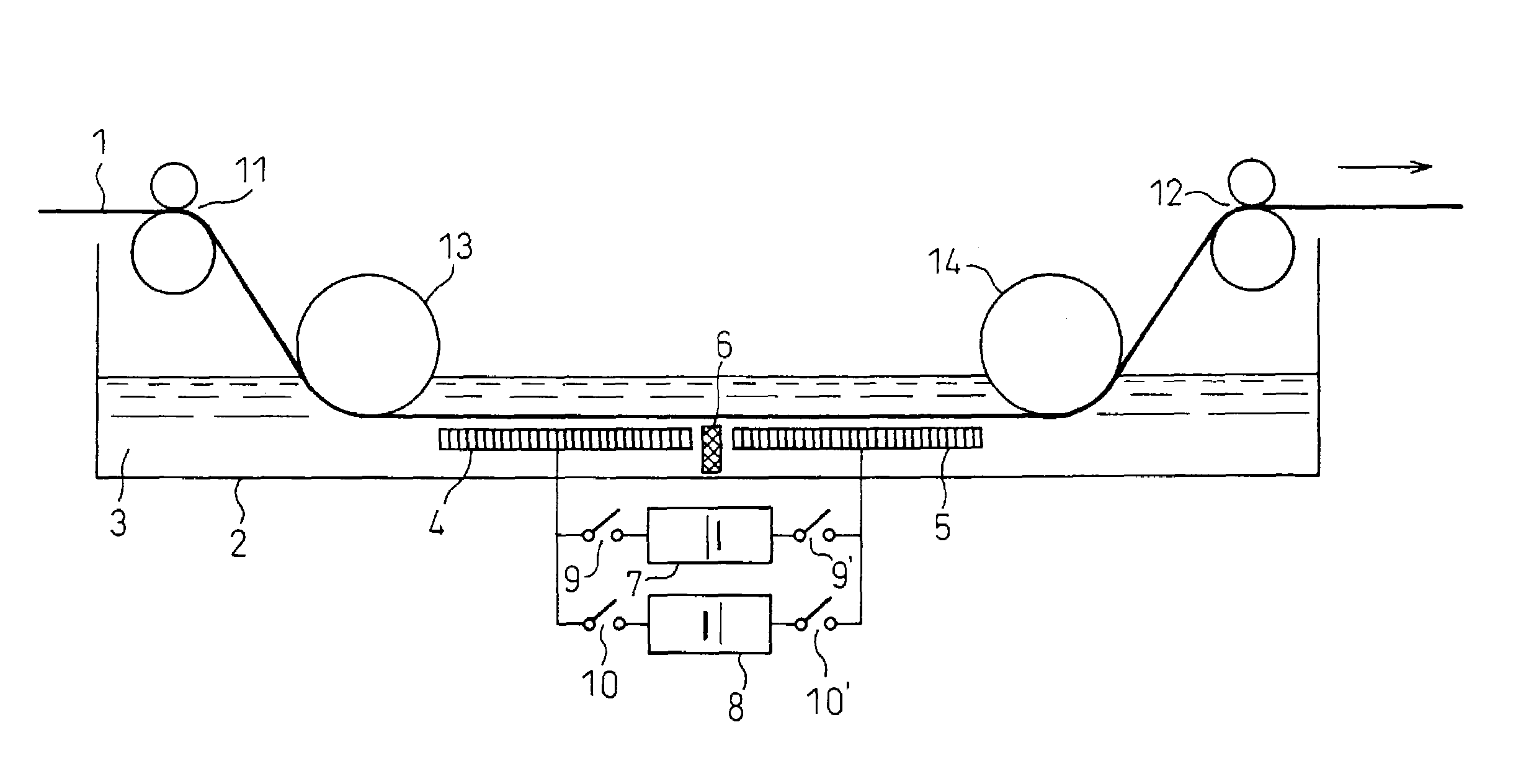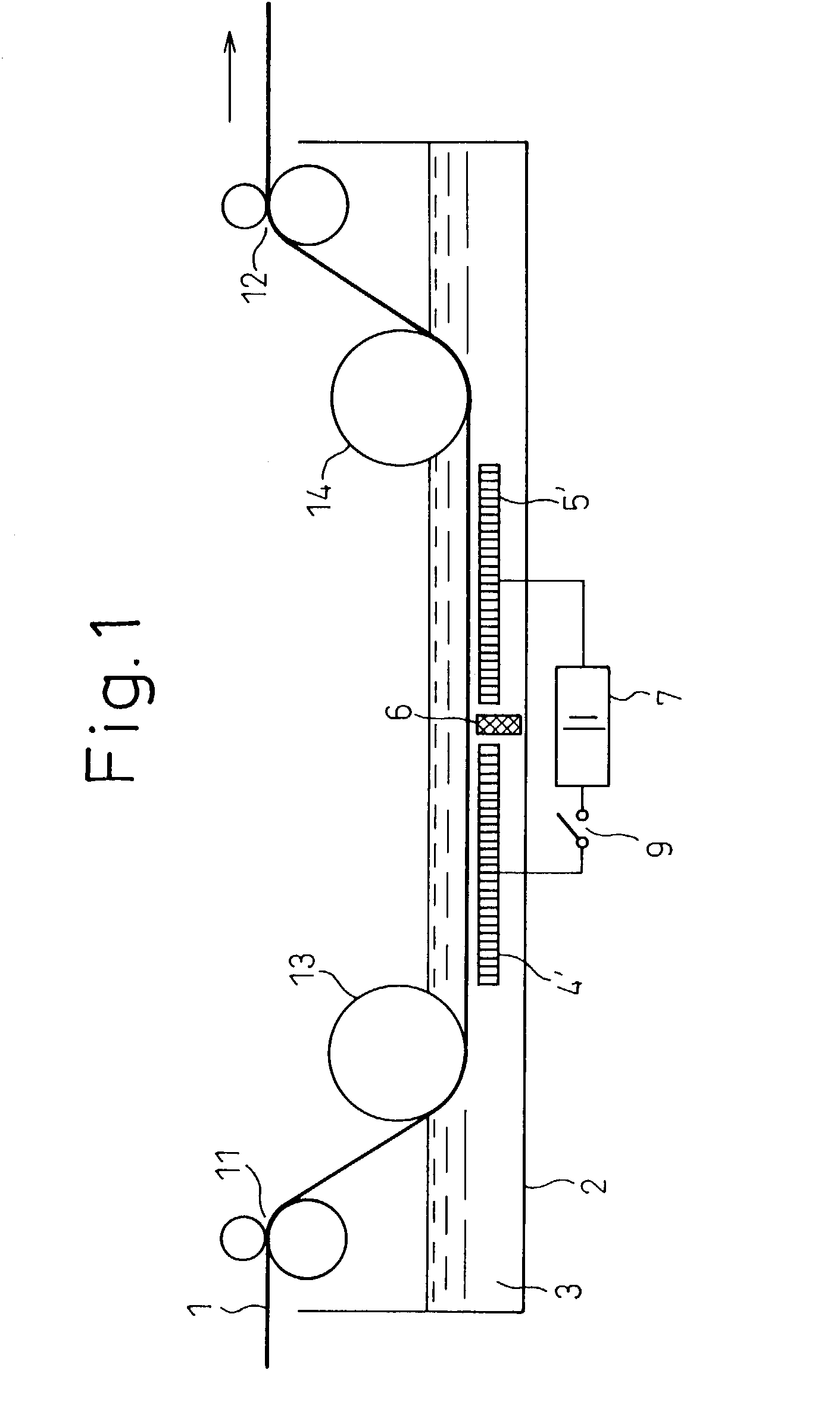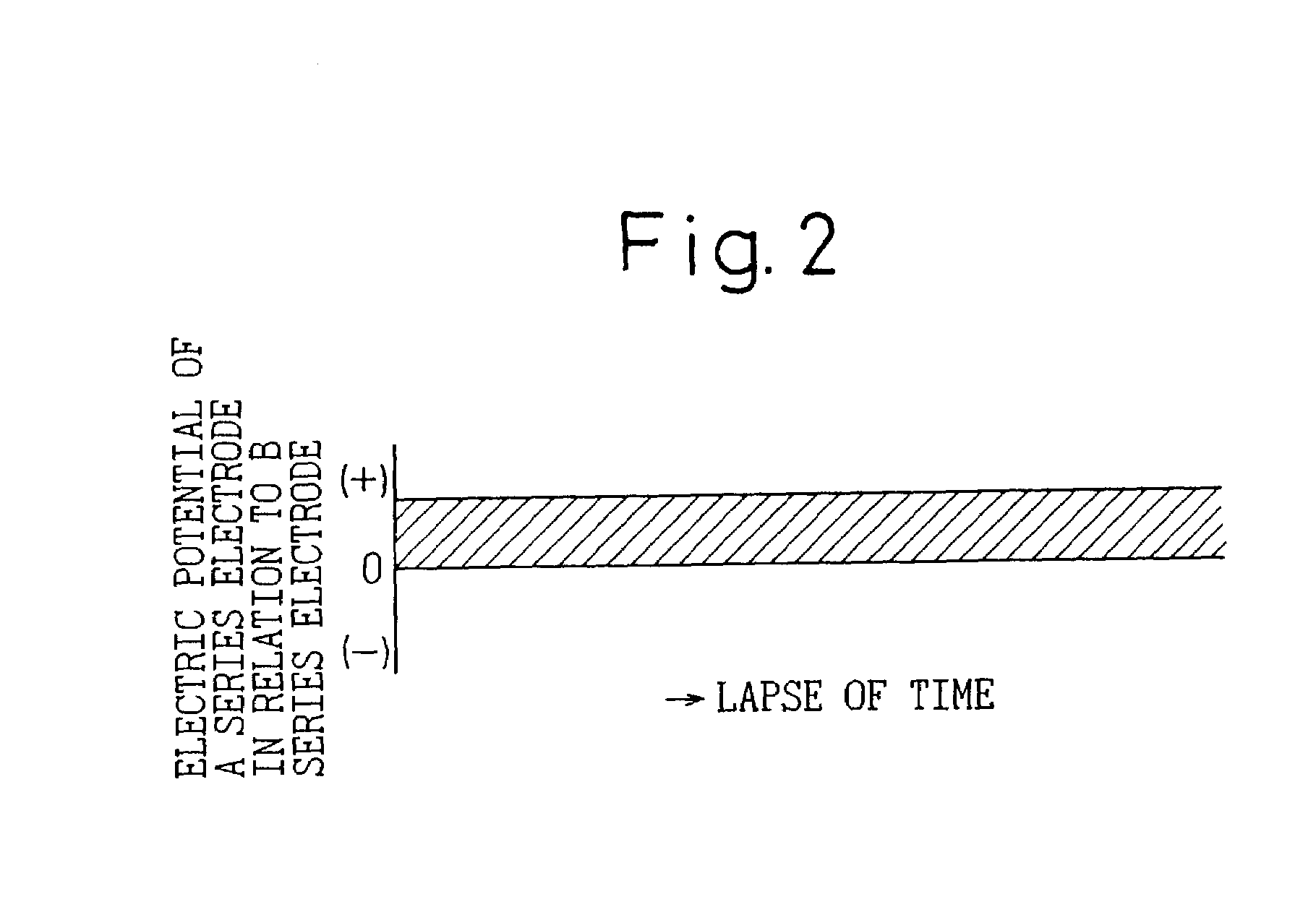Method for indirect-electrification-type continuous electrolytic etching of metal strip and apparatus for indirect-electrification-type continuous electrolytic etching
- Summary
- Abstract
- Description
- Claims
- Application Information
AI Technical Summary
Benefits of technology
Problems solved by technology
Method used
Image
Examples
example
[0085]The present invention is explained concretely based on examples hereafter.
examples 1 to 5
[0086]The metal strips in these examples before electrolytic etching were grain-oriented silicon steel sheets cold-rolled to the final thickness, decarburization-annealed, painted with an anti-sticking agent for annealing consisting of MgO on both the surfaces and dried, then final-annealed, and having tension coating films (insulating coating films of a phosphate) formed through painting and baking on the coating films of forsterite (Mg2SiO4) that had formed during the final annealing on both the surfaces. They were also grain-oriented silicon steel sheets having, in addition, etching patterns formed on one of the surfaces by selectively removing the forsterite coating film and tension coating film using a laser beam to expose the steel base material. Note that, as the tension coating film was an electrically insulating coating film, it was used as the etching mask.
[0087]The grain-oriented silicon steel sheets pretreated as described above were subjected to an electrolytic etching ...
example 6
[0105]Etching patterns, each 0.3 mm in width, were formed at intervals of 6 mm by laser beam irradiation on steel sheets which had been finish-rolled to a thickness of 0.23 mm by cold rolling, final-annealed as grain-oriented electrical steel sheets and painted with insulating coating films, and, then, the steel sheets were processed in an electrolysis tank in which a cathode and an anode were arranged alternately so as to face the surface of the steel sheets where the steel base material was partially exposed. Here, a 5%-aqueous solution of sodium chloride was used as the electrolyte and its pH value was adjusted using sodium hydroxide and hydrochloric acid. The etching was conducted under different values of pH ranging from 1 to 12.
[0106]The specimens according to the present invention were taken out and the shapes of grooves were examined; grooves about 20 μm in average depth had been formed. Table 2 shows the result of the investigation of the amounts of iron precipitation in th...
PUM
| Property | Measurement | Unit |
|---|---|---|
| Current | aaaaa | aaaaa |
| Digital information | aaaaa | aaaaa |
| Time | aaaaa | aaaaa |
Abstract
Description
Claims
Application Information
 Login to View More
Login to View More - R&D
- Intellectual Property
- Life Sciences
- Materials
- Tech Scout
- Unparalleled Data Quality
- Higher Quality Content
- 60% Fewer Hallucinations
Browse by: Latest US Patents, China's latest patents, Technical Efficacy Thesaurus, Application Domain, Technology Topic, Popular Technical Reports.
© 2025 PatSnap. All rights reserved.Legal|Privacy policy|Modern Slavery Act Transparency Statement|Sitemap|About US| Contact US: help@patsnap.com



